



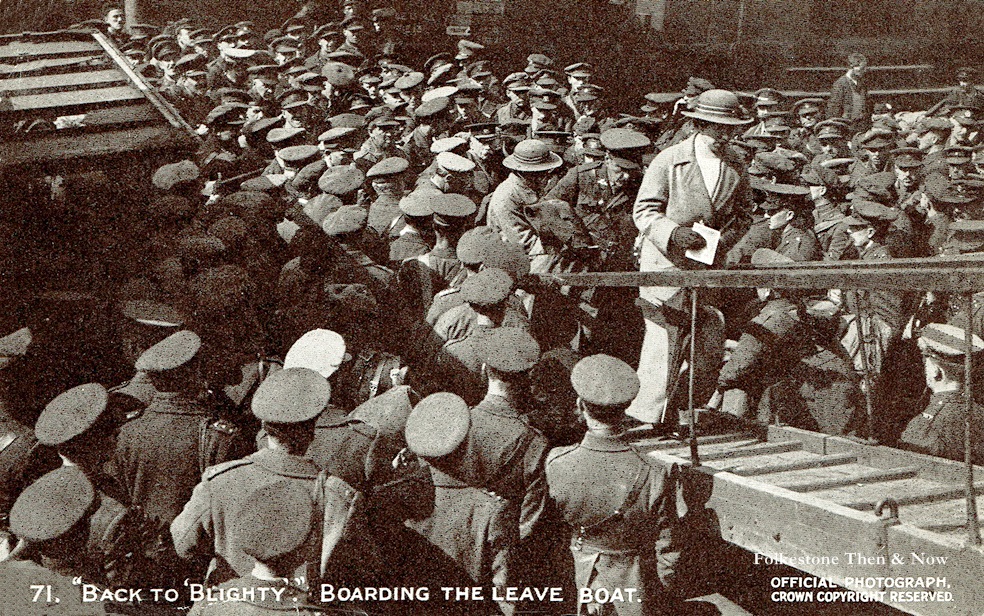
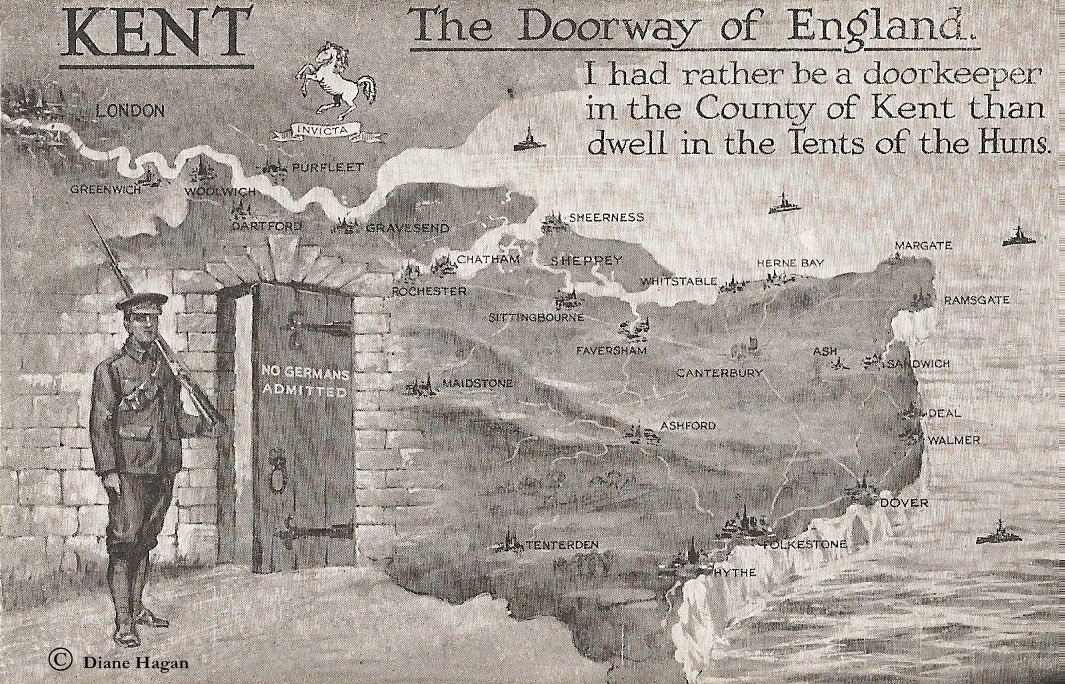
Here are the men going home for a little bit of well earned leave.
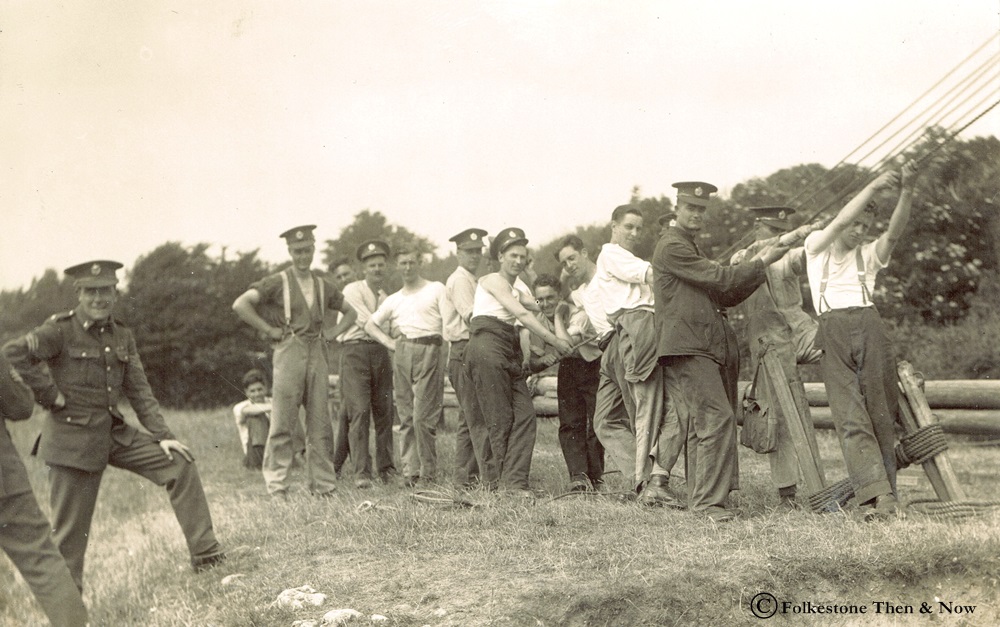
3rd & 39 Companies hard at work at Shorncliffe Camp in 1931
On this page, I plan to put photos up as I get them, so I may switch from WW2 to WW1, pre war to post war, in fact anything military related. This way I can just add them without revamping the whole page. Hope you can keep up! If I repeat any from the previous page, please forgive me. Getting old & forgetful!
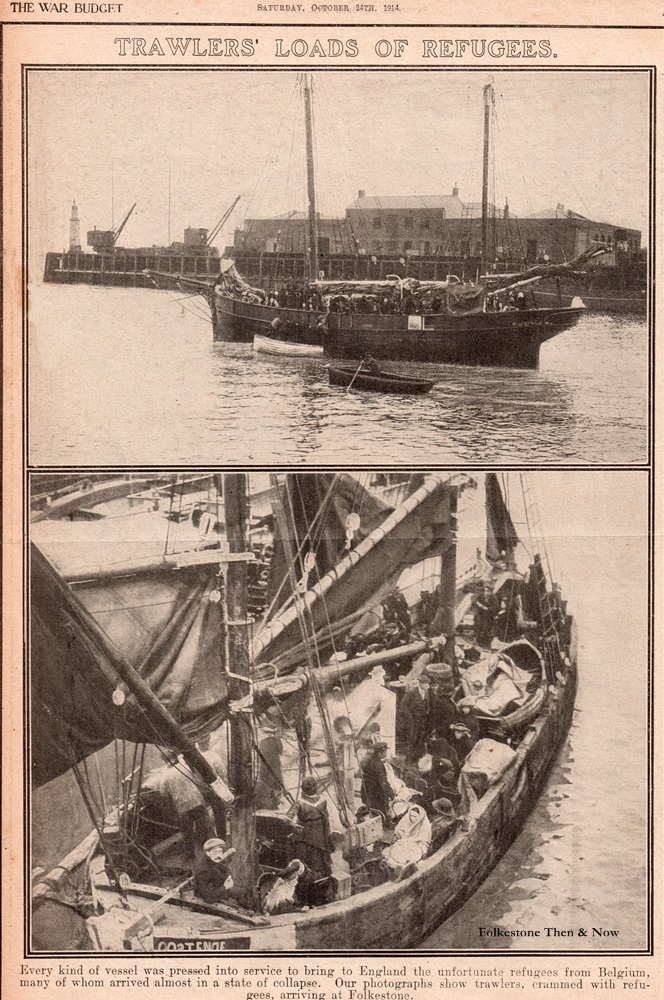
This is a newspaper clipping from the War Budget, October 1914, when Folkestone and many other coastal towns stepped up to rescue thousands of Belgians from the Nazis. Fishermen went out in droves and brought them back, and the townspeople took them into their homes, gave them food and clothing as they arrived in shock with no belongings.
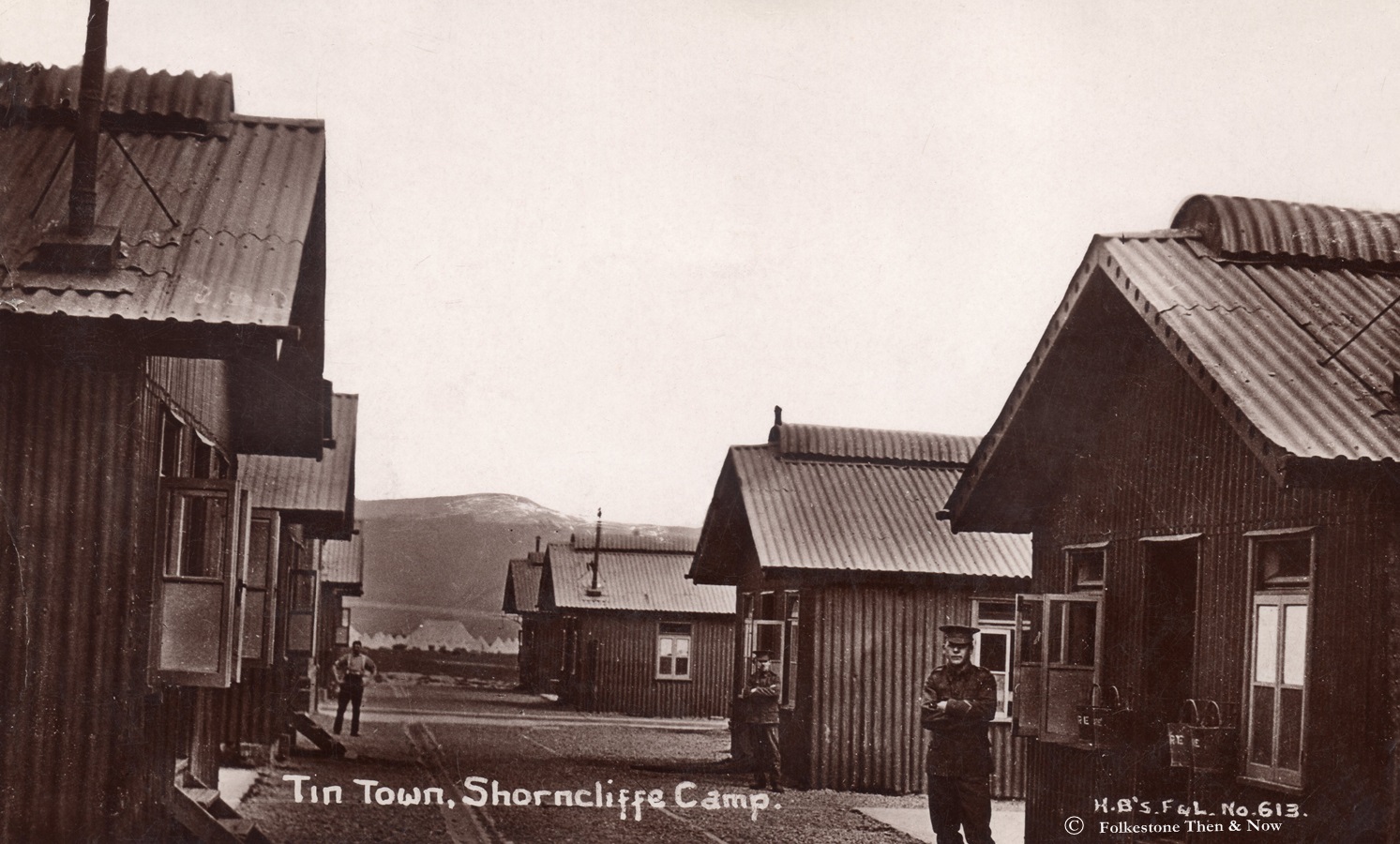
This was dated 1914 too, I expect you guessed it was Shorncliffe Camp and the reason it had the name Tin Town was pretty obvious. I bet it was hard to sleep in those huts during a heavy rain fall.
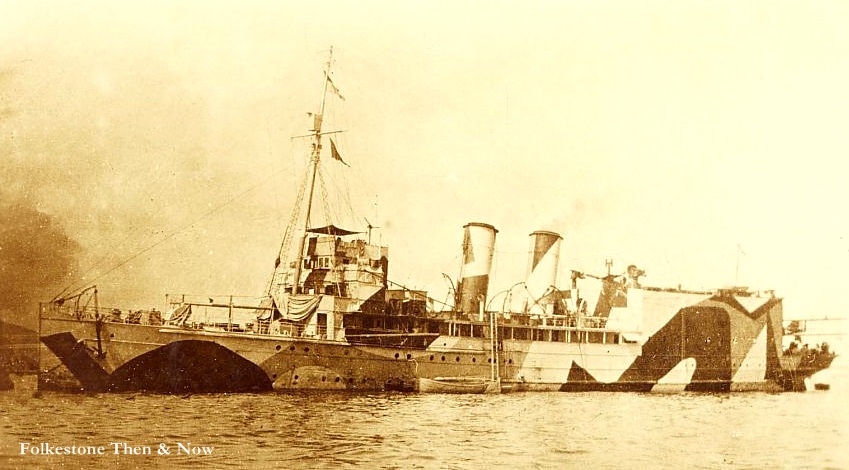
Royal Navy Sea plane carrier H.M.S. Engadine in Dazzle paint during WW1
H.M.S. Engadine, built by Denny as the Folkestone-Boulogne ferry for South Eastern & Chatham Railway Co. was launched on 23 Sept. 1911 and named after the Engadine Valley in Switzerland.
She was a sea plane tender which served in the First World War following being taken over by the Royal Navy in 1914 along with her sister ship H.M.S. Riviera and modified by the construction of cranes and a hangar aft of the funnels so that she could carry four short 184 sea planes. There was no flight deck, the aircraft being lowered onto the sea for takeoff and recovered again from the sea after landing.
Her aircraft participated in the Cuxhaven Raid on Christmas Day 1914. At the Battle of Jutland in 1916, one of her sea planes, piloted by Lieutenant Frederick S. Rutland with Assistant Paymaster G.S. Trewin as observer, carried out an aerial reconnaissance of the German fleet. This was the first time a heavier-than-air- aircraft had carried out a reconnaissance of an enemy fleet in action. Later in the battle she rescued the crew of the crippled H.M.S. Warrior before taking her in tow. Later in the war she served in the Mediterranean.
She was sold back to her original owners in December 1919 and sunk by a mine with heavy loss of life in Manila Bay in December 1941 having been renamed Corregidor in 1933.
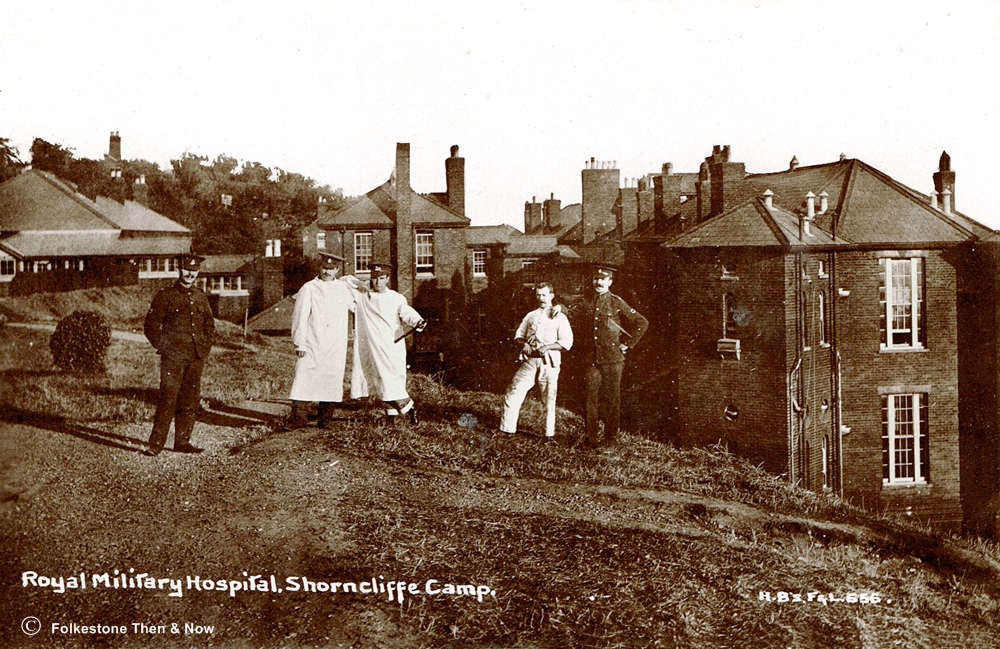
This was the hospital that served Shorncliffe Camp for both the military and their families. Many people still living in Folkestone were born in that hospital, whose parents were living in Married Quarters at the time, in fact I believe my first husband was born there in 1940 when the family were living in Risborough Lines.
Still on Shorncliffe Camp, we have the Garrison Church, now the Tower Theatre. It looks like a busy place these days with lots of productions, with not only plays, but opera too.
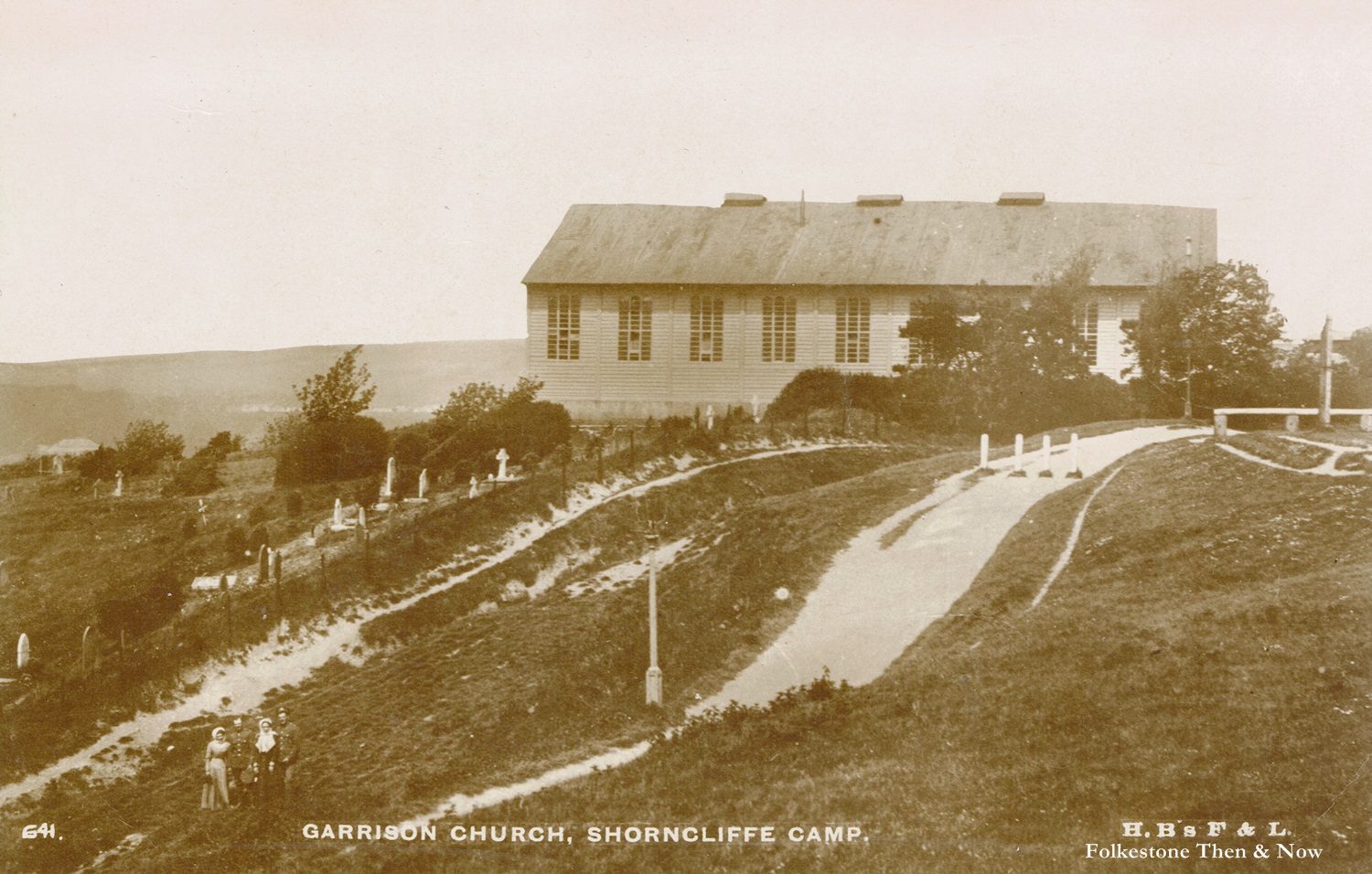
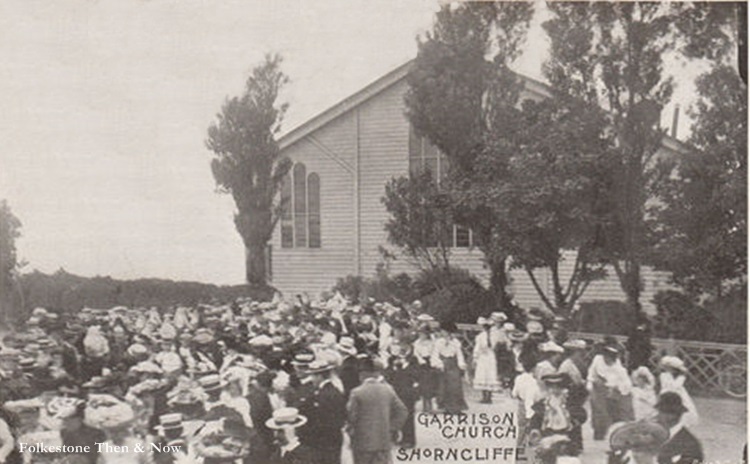
Another one of the Garrison Church from the age long dresses and hats.
Here are a couple of photos that may not belong on this page, but as I don't know where they would fit better, I am leaving them here. On the left is the Hythe Excelsior Military Band, and on the right, well I am not sure. Are they Military Police? Are they regular Police? Are they not Police at all? I don't have a date for either of them.
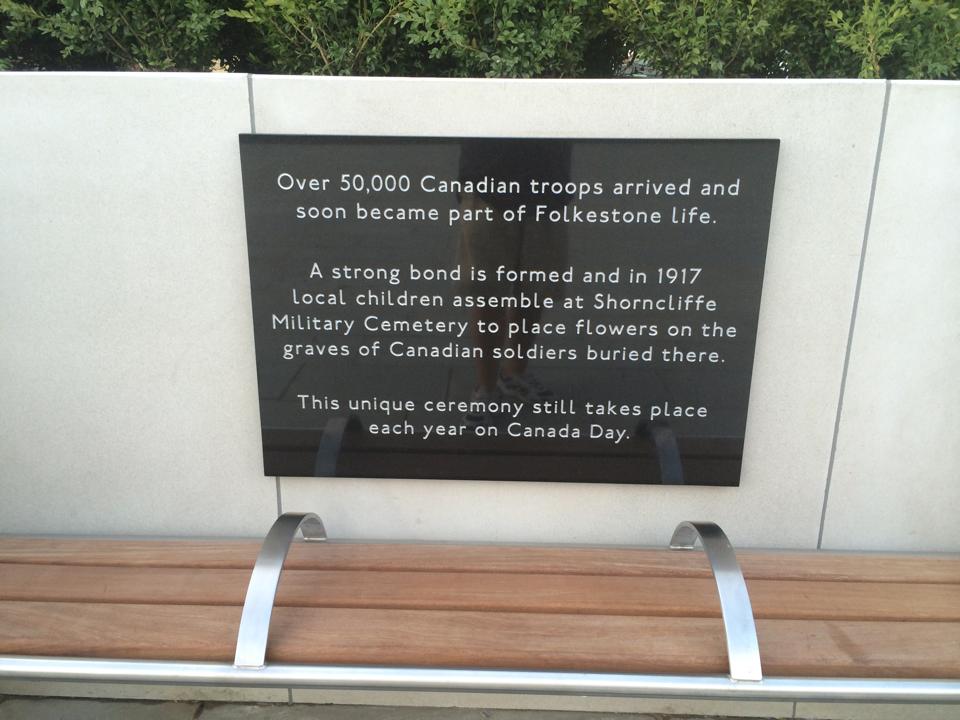


This message is on a bench at the Memorial Arch (below) on The Leas. So while we are here, let's look at a few of these Canadians.


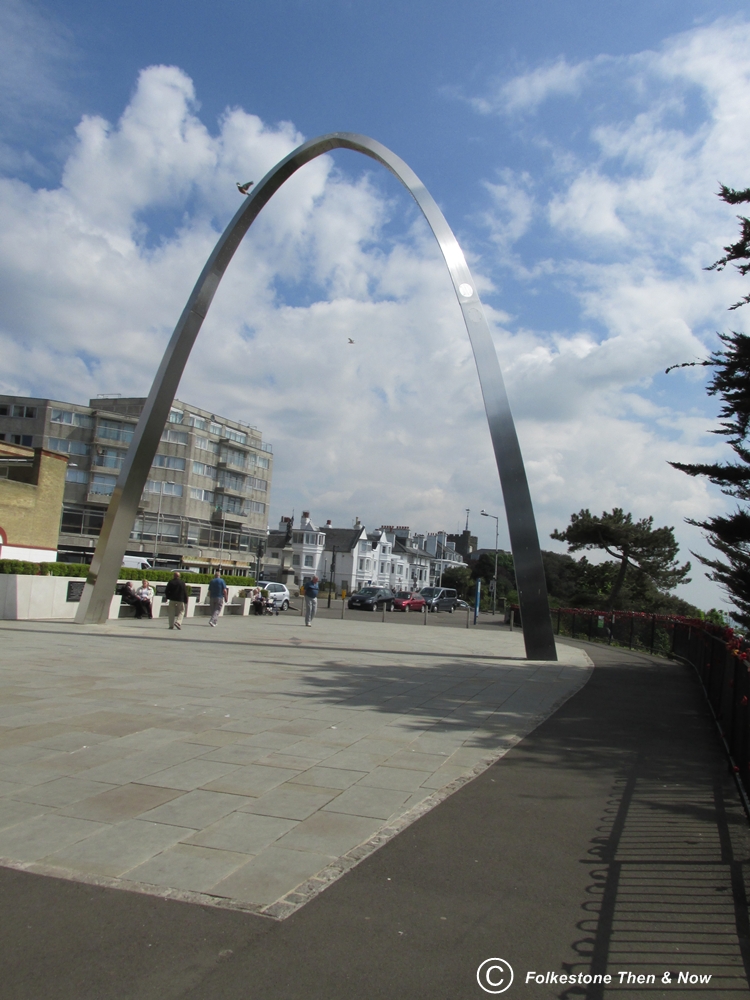
Canadians stayed in Folkestone before heading to the front line. For many of the boys from Canada, it was their first time away from home, let alone their country. This makes it all the more remarkable they signed up to fight a war which paid no threat to their homeland. For many who had emigrated during the past two decades there were still family links, but there was also a strong sense of Commonwealth which drew them to these shores.
Having undergone shooting drills and practised going over the tops of trenches at Seabrook and Sandling, the men were deemed ready for the front line.
On September 2 1915, King George V visited Folkestone to inspect the Canadians. He told them: "The past weeks for you at Shorncliffe Camp have been for you a period of severe and rigorous training. History will never forget the loyalty and readiness with which you rallied to the aid of your mother country in the hour of danger. May God bless you and bring you victory."
Victory would eventually arrive, but at a price. In the war cemeteries in France and Belgium sit rows upon rows of headstones bearing the emblem of the maple leaf. At Shorncliffe there are buried 296 Canadian soldiers who died of wounds, illness or an air raid on the town in 1917.
Which is why, since 1919 every year on Canada Day, July 1st, Folkestone has paid its respects to those who rallied to fight the war alongside the British troops.
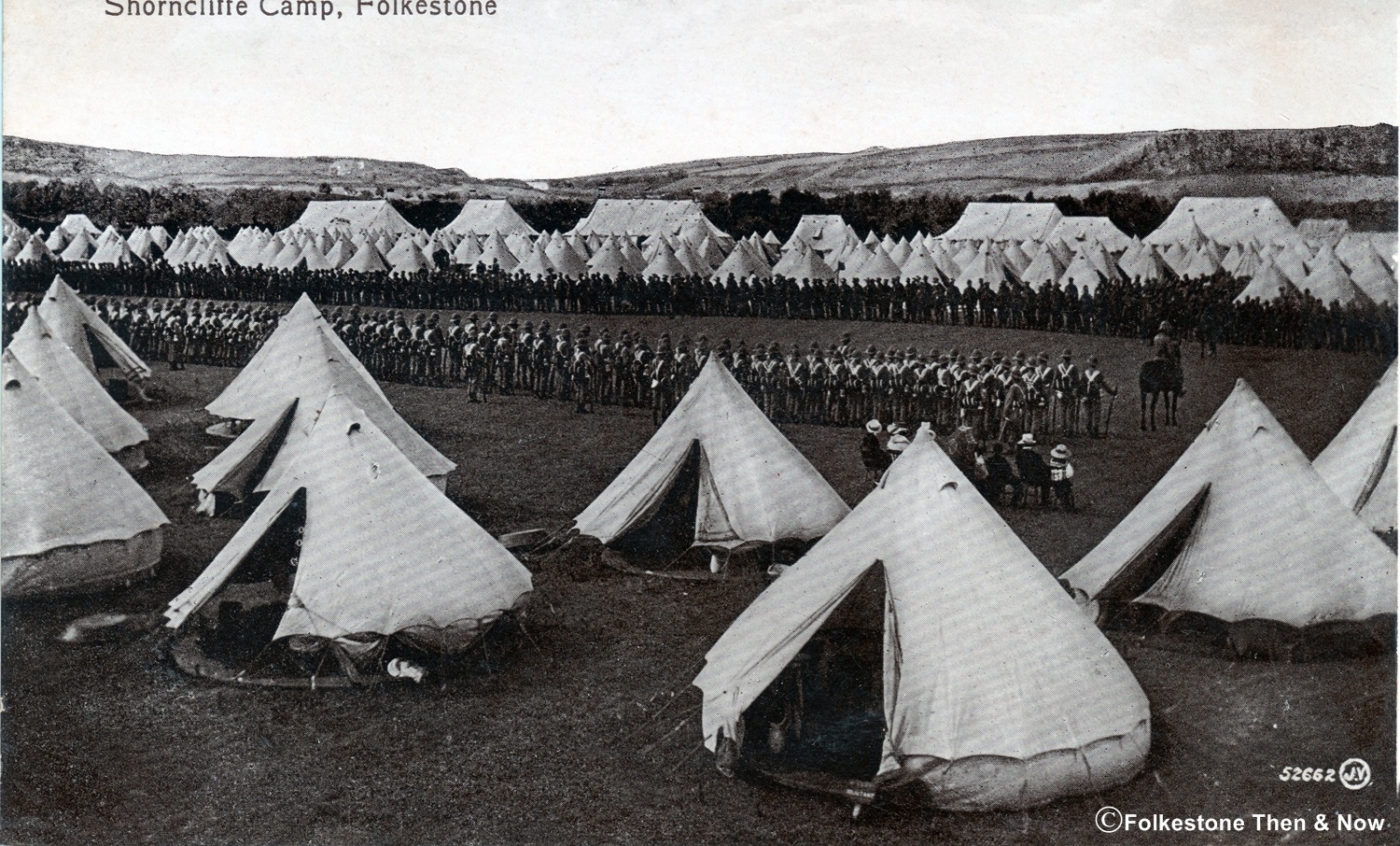
So let's look at some of those Canadians:
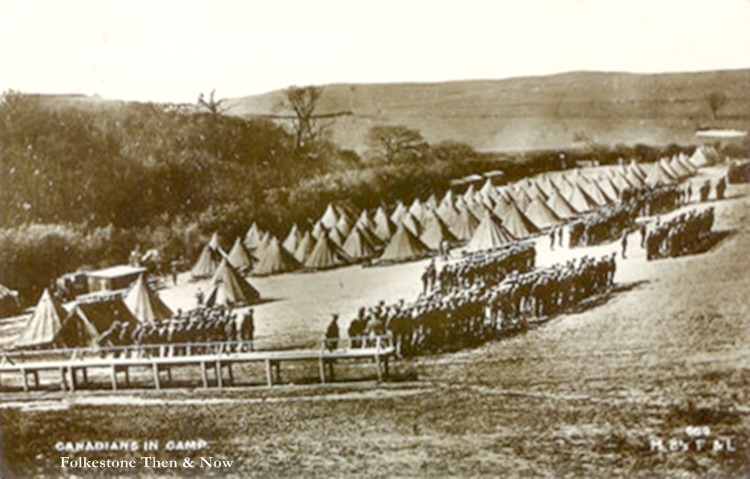
1916
Canadian Engineers Division, Royal Engineers Camp, Shorncliffe
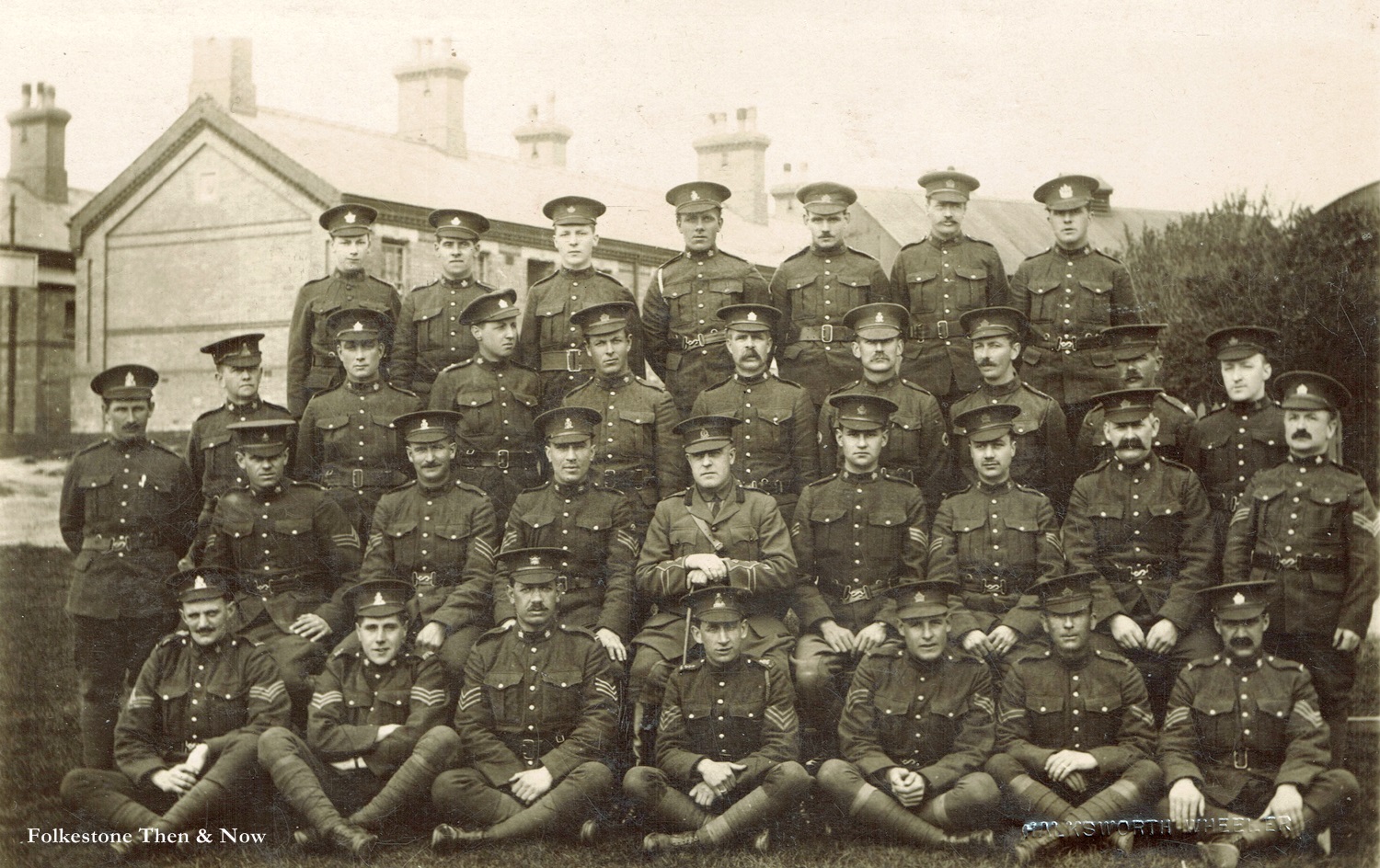
The Canadian Expeditionary Force, formed especially for WW1 was made up of many nationalities, not just Canadian, in fact two of the Major sons on the People of Folkestone page were in the C.E.F. and they were British.
If you would like to know more about them, and where they went during the war, they have a lot of information here: https://en.wikipedia.org/wiki/Canadian_Expeditionary_Force
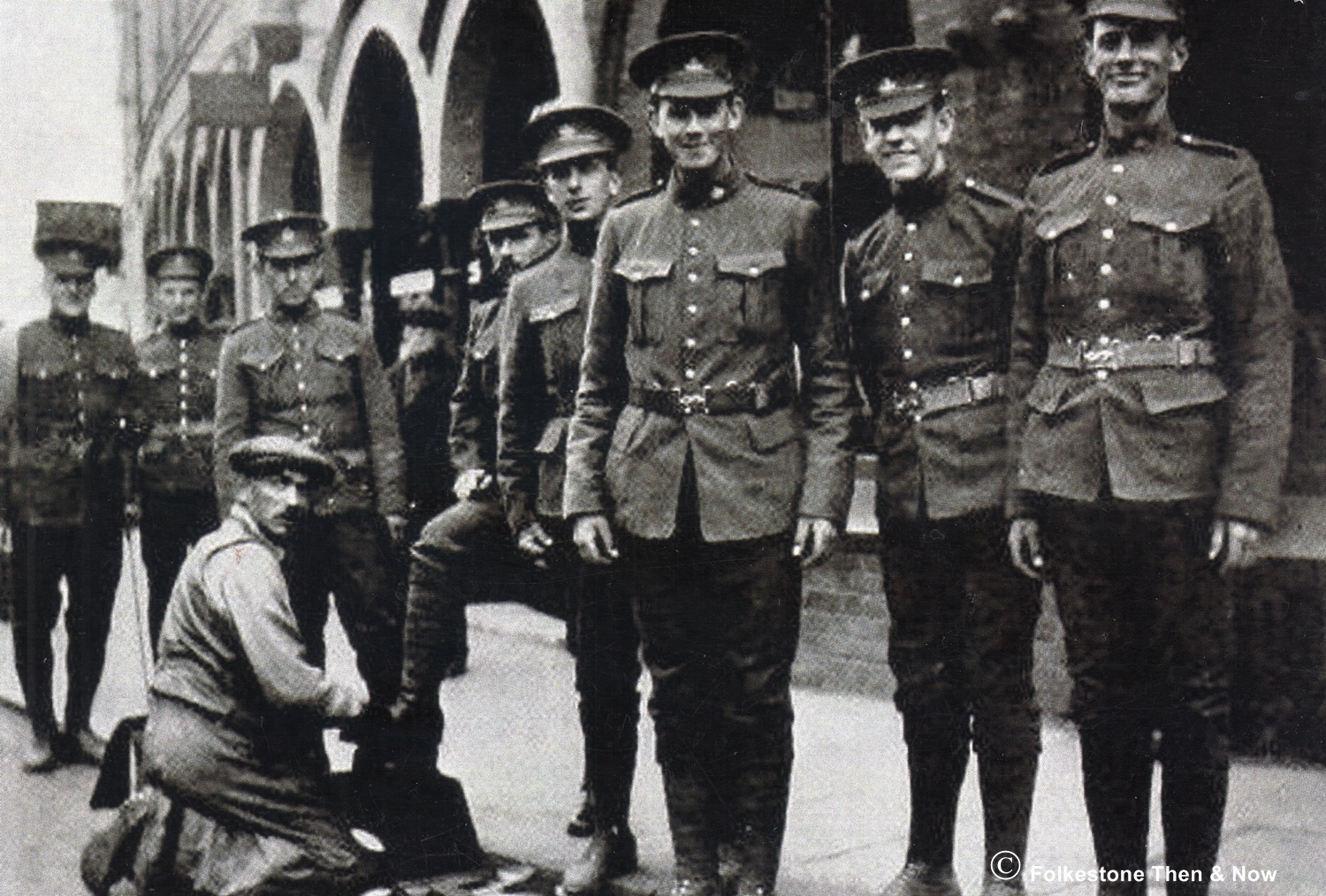
This was entitled Canadian Troops getting a shoeshine in Folkestone. Dated 1915. Does anyone recognise the large building behind them? I admit I do not.
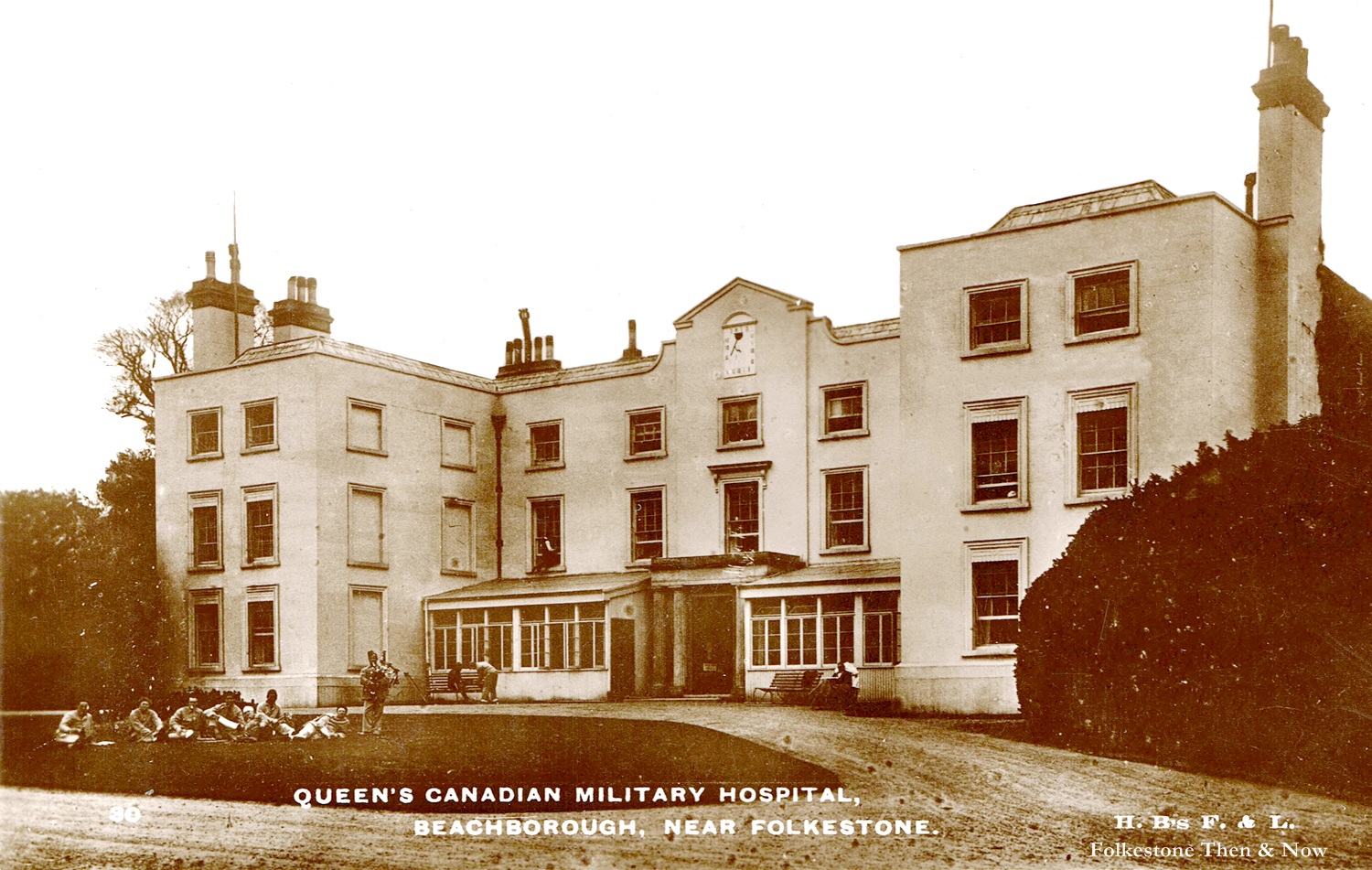
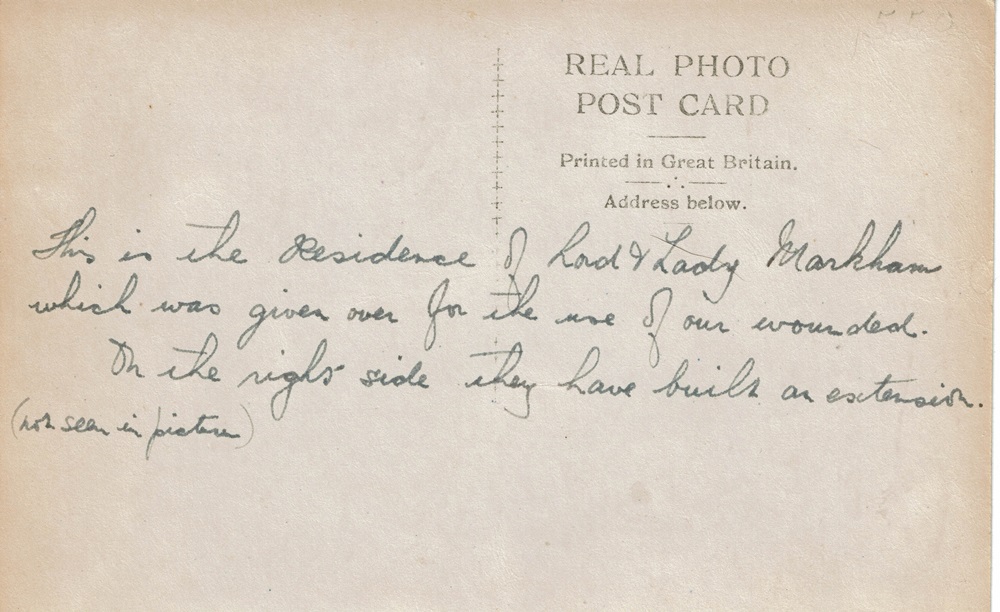
This was the back of the postcard above. It reads: This is the residence of Lord & Lady Markham which was given over for the use of our wounded. On the right side, they have built an extension (not seen in picture).
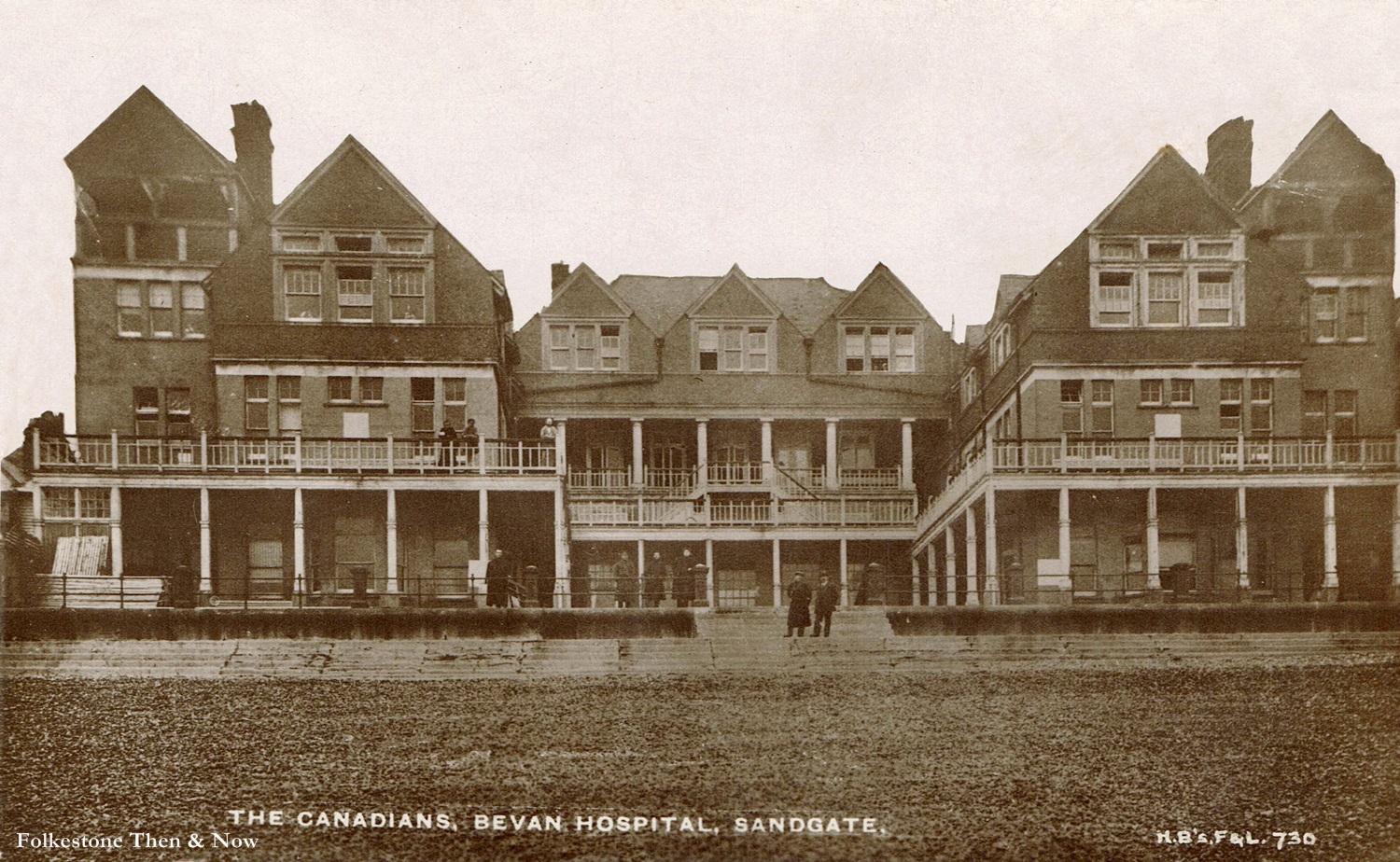
This was the Alfred Bevan Home in Sandgate. A nursing home before the war, I am not sure if it went back to being a nursing home afterwards, or where all the people were rehoused.
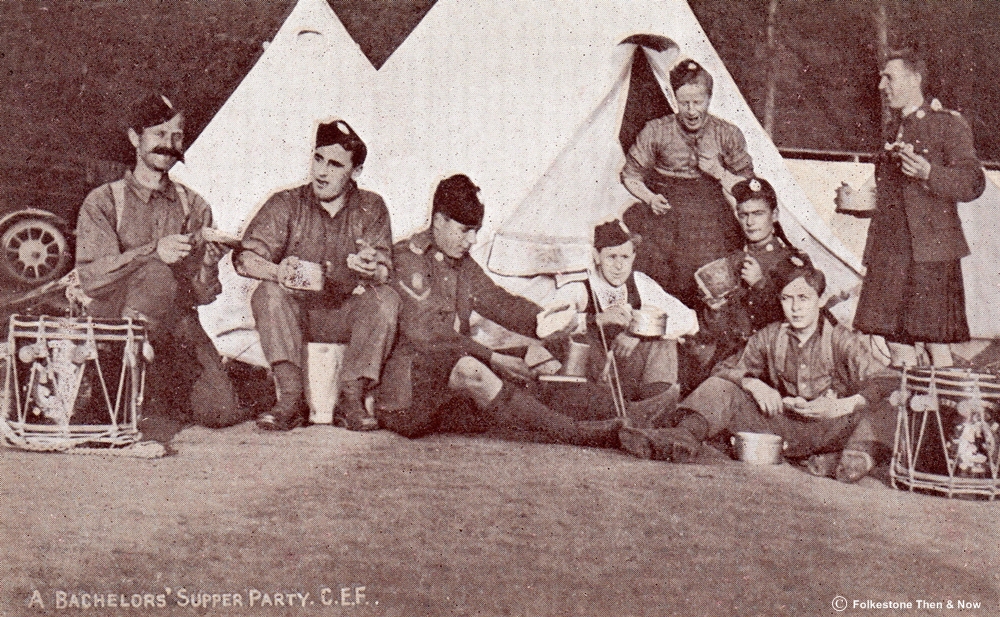
I know I have this one on page 1, but as they are members of the Canadian Expeditionary Force, I will add them here too.
This was a newspaper clipping of the kitchen of the C.E.F.
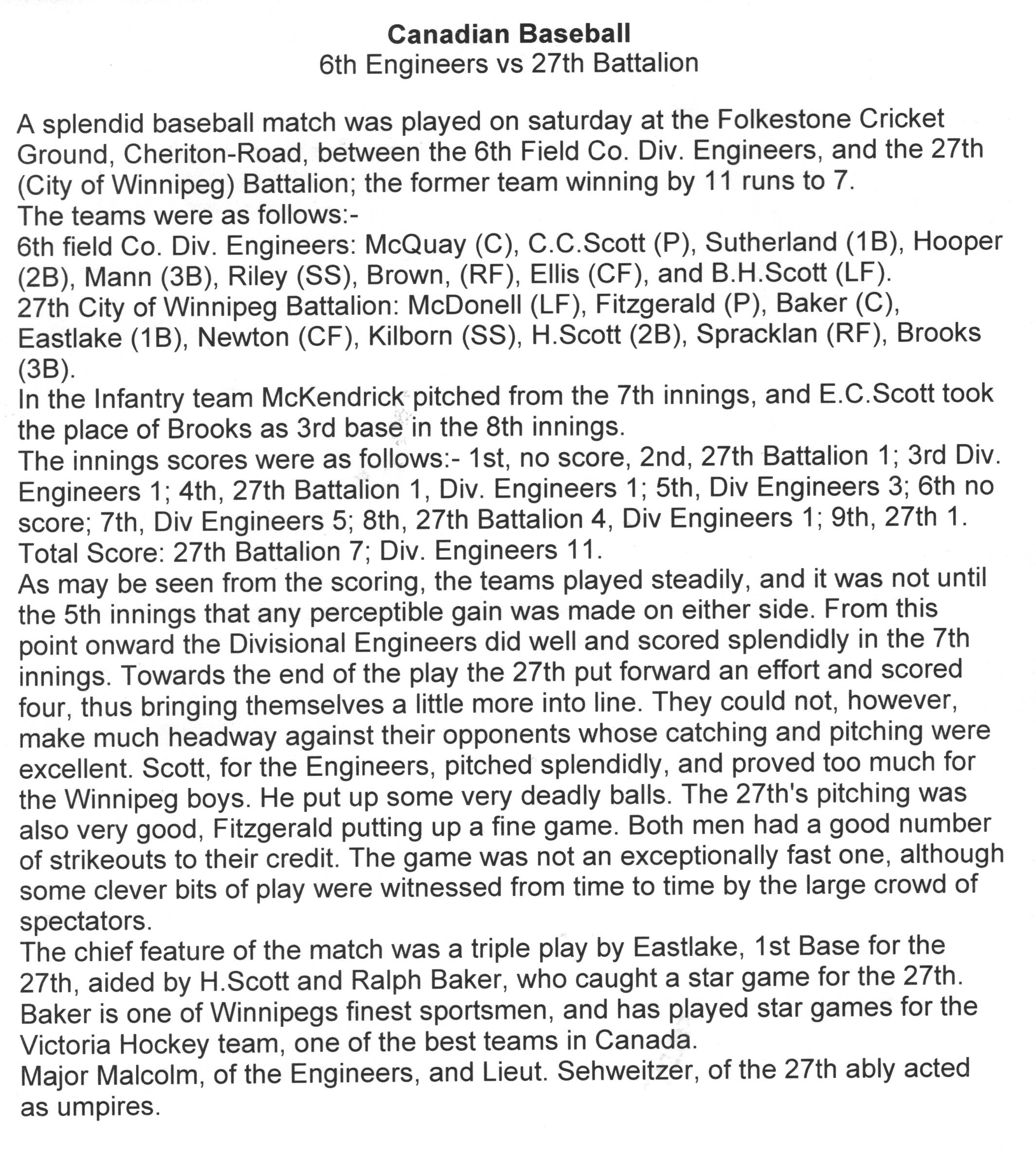
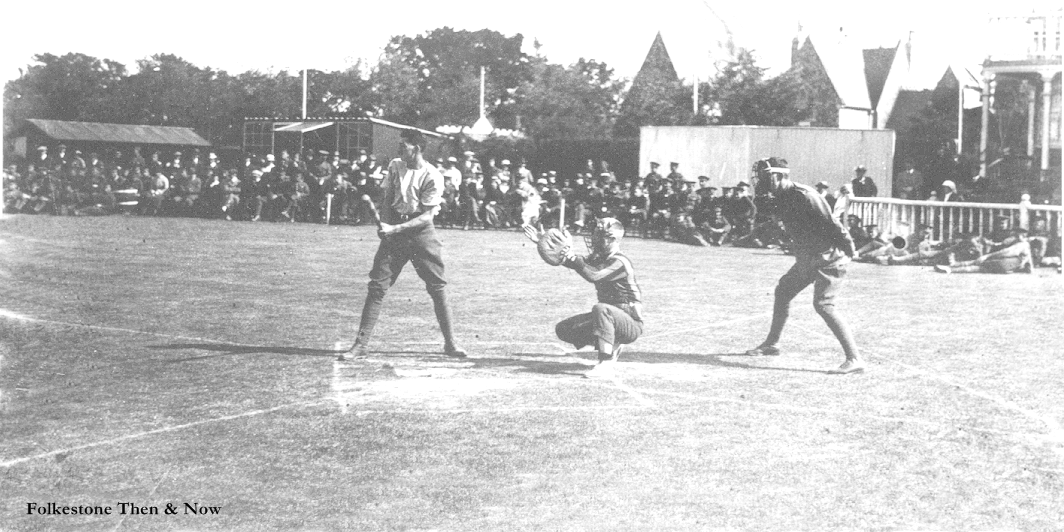
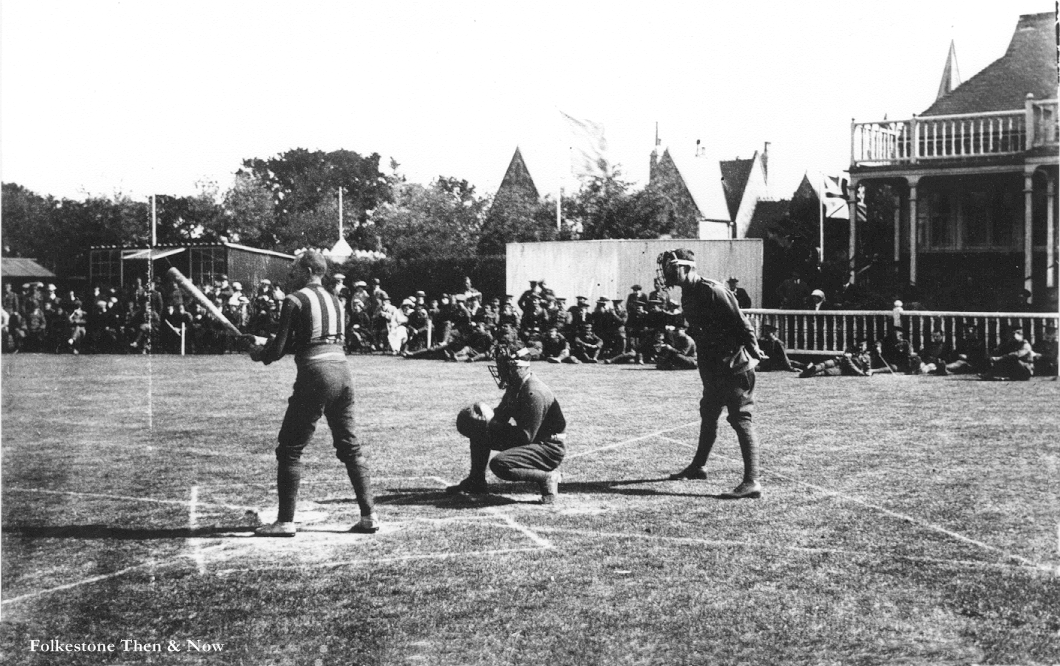
6th Field Co. Div. Engineers - the Winners!
27th (City of Winnipeg) Battalion - the Losers
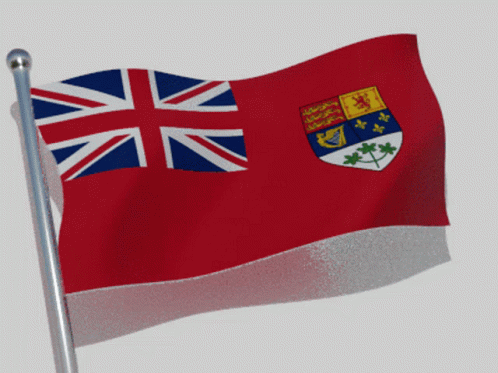
This was Canada's flag at the time of WW1
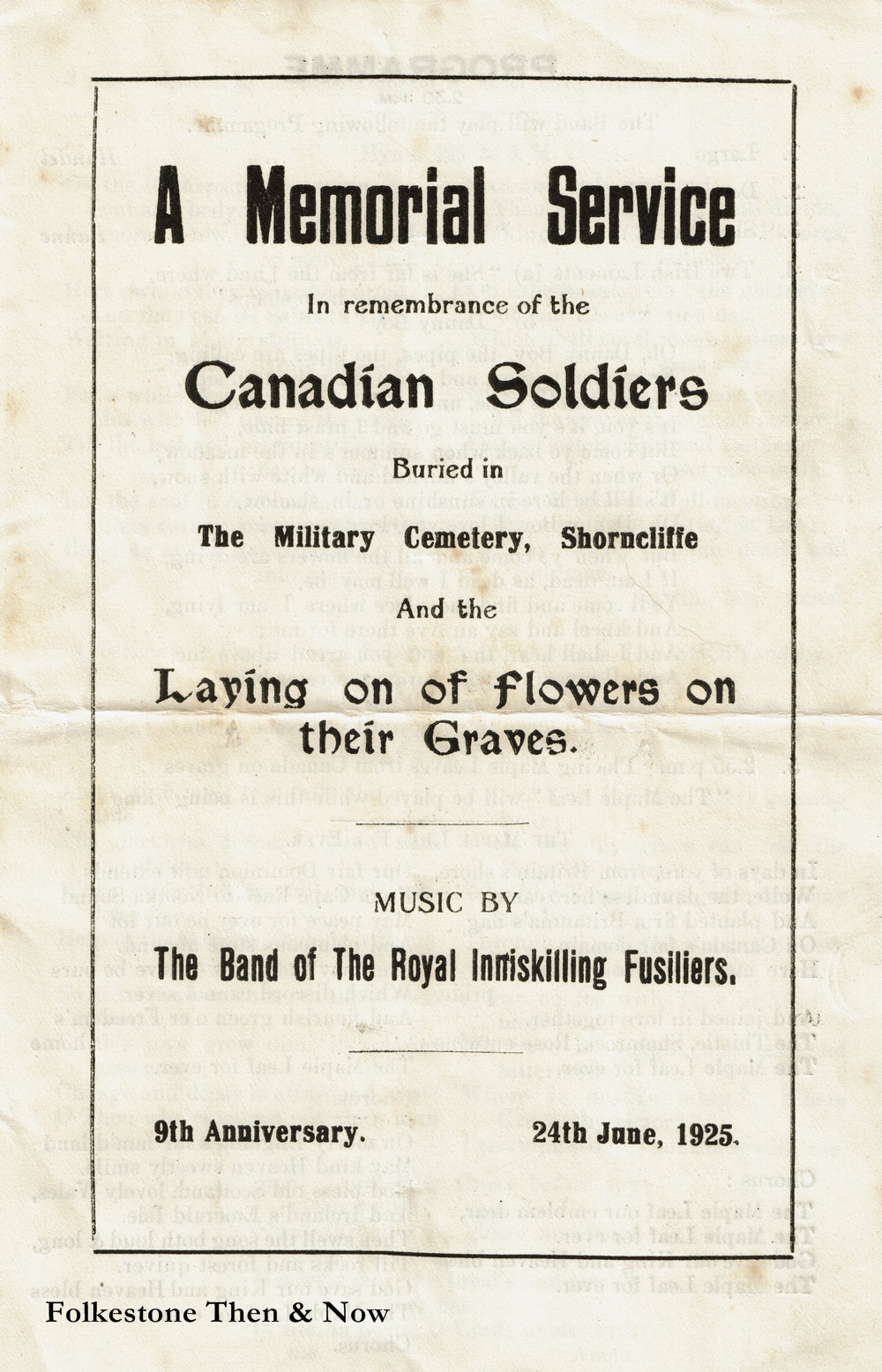
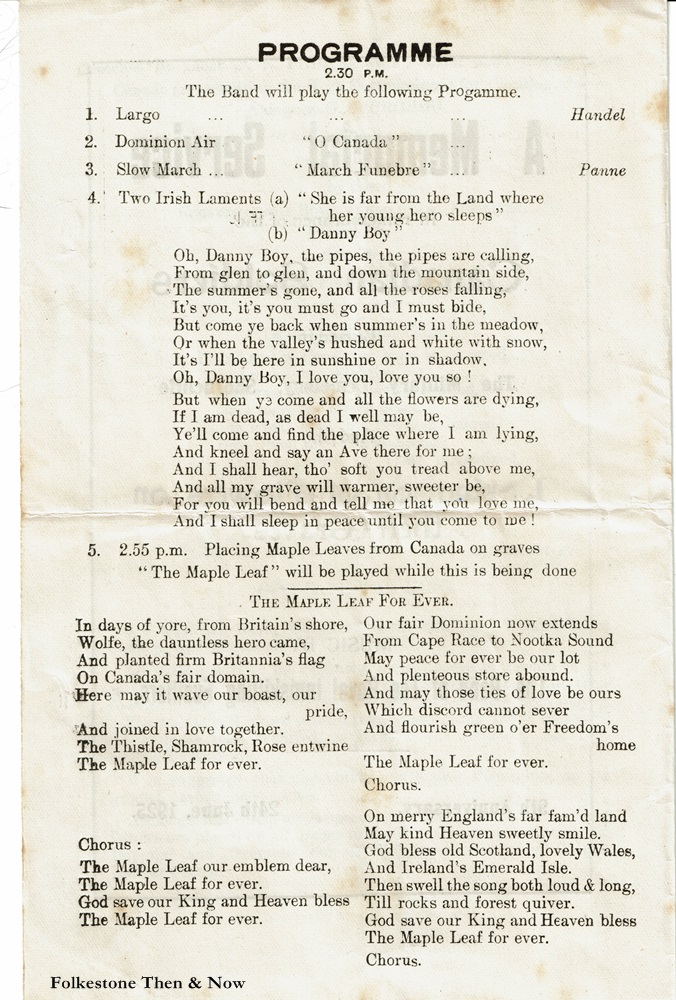
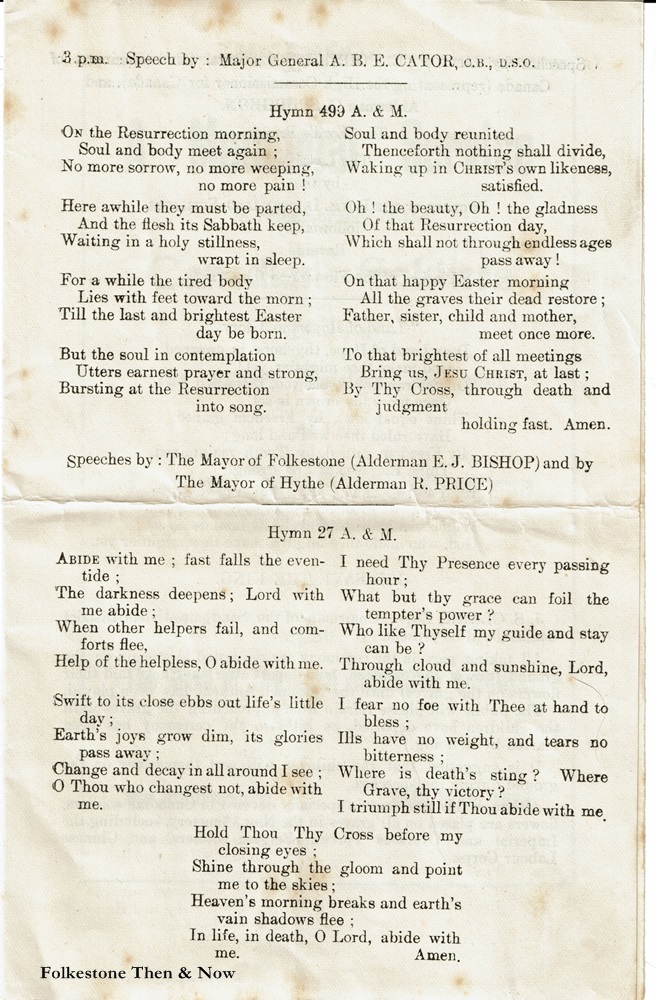
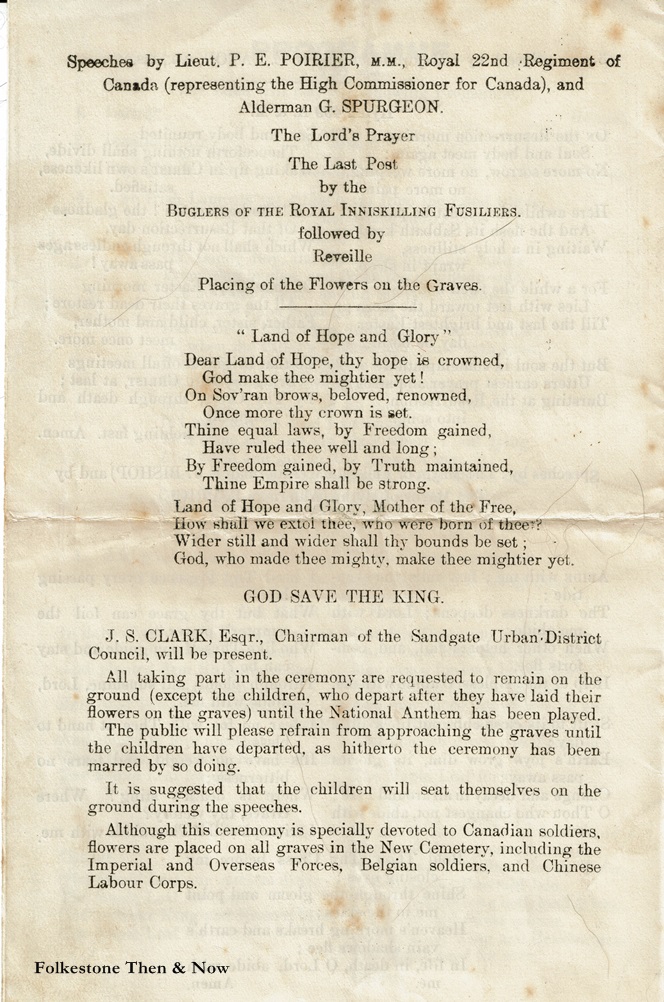
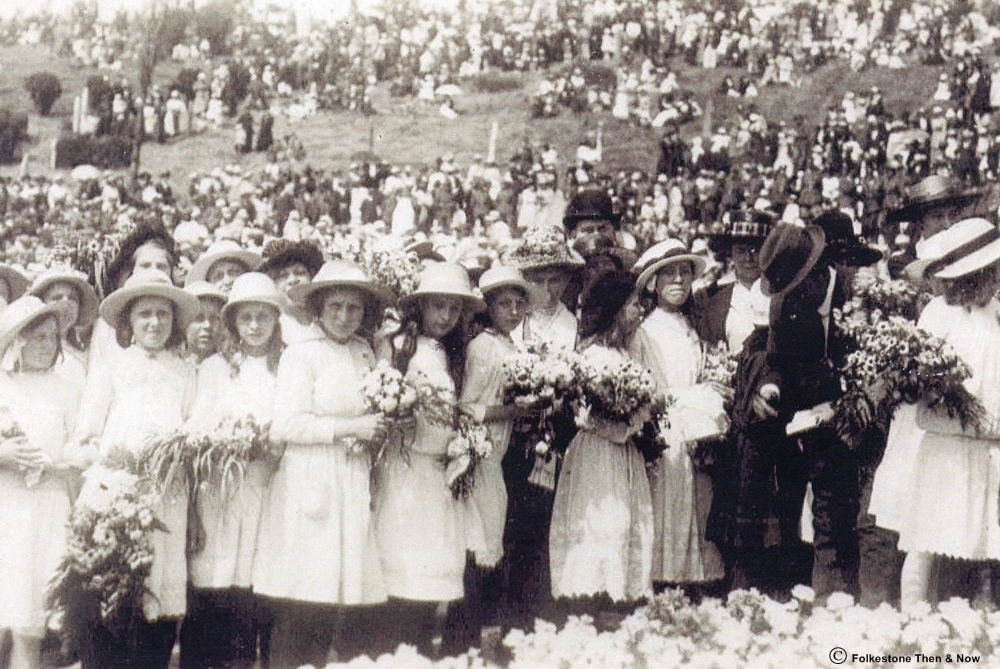
This is a photo of school children laying flowers on the graves of the Canadian soldiers. A ritual they do to this day on Canada Day, July 1st.
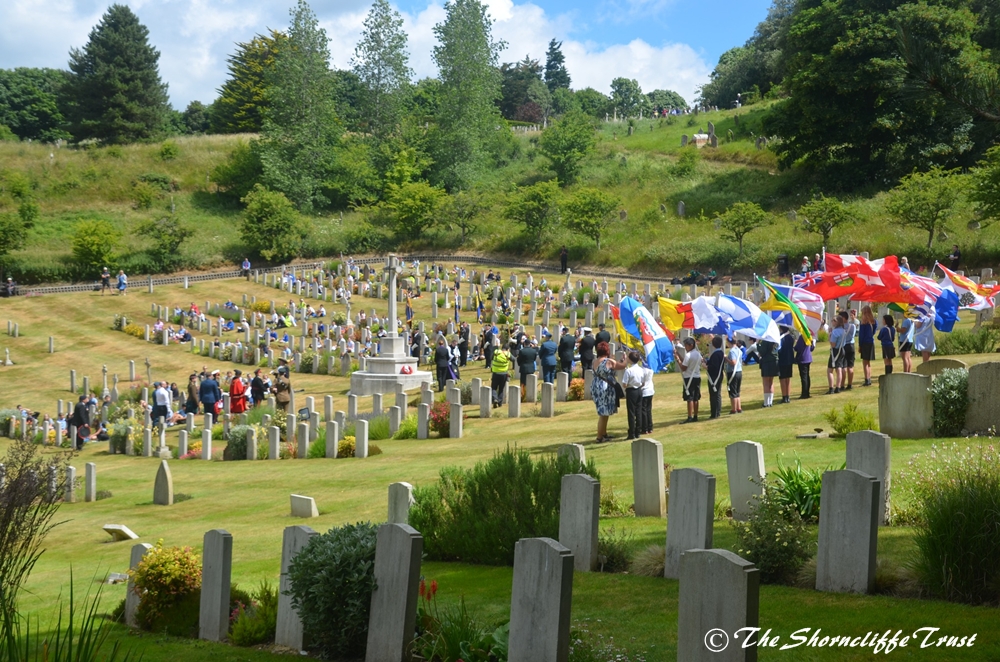
Here is the service being held at the Shorncliffe Military Cemetery in 2022 photo courtesy The Shorncliffe Trust. How lovely that all the Canadian provinces are represented with flags. My Manitoba flag is the all red just this side of the red and white Maple leaf flag of Canada. The school children were there again laying flowers on the graves. I am sure the descendants of these brave men will be gratified to see this.
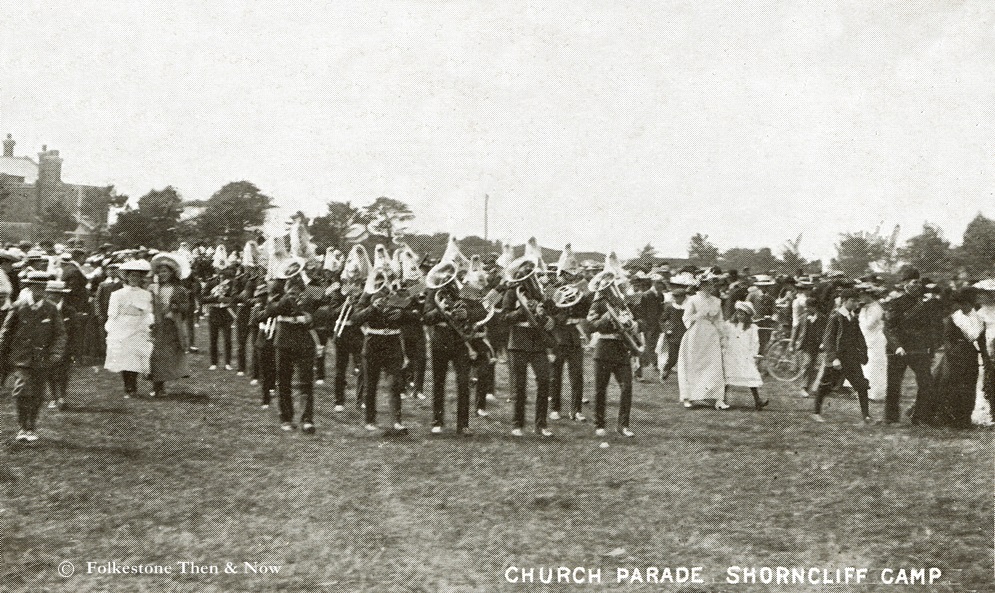
I found this one interesting reading on the back. It was sent in 1905 by a lady named Athena Hartwich to Miss Nellie Tritton at the Parsonage in Preston, near Dover, Kent. She was apologising profusely for not going over to speak to her that afternoon when she was sitting at a table behind her, having tea in the Leas Pavilion on The Leas. She explained she was governess to a little girl, and was helping her mother entertain her friends, so couldn't leave the table. I found it poignant, as they recently, despite a lot of protest, demolished the beautiful heritage building that used to be the Leas Pavilion, in order to erect yet another sky scraper of expensive flats. Par for the course in Folkestone these days sadly.
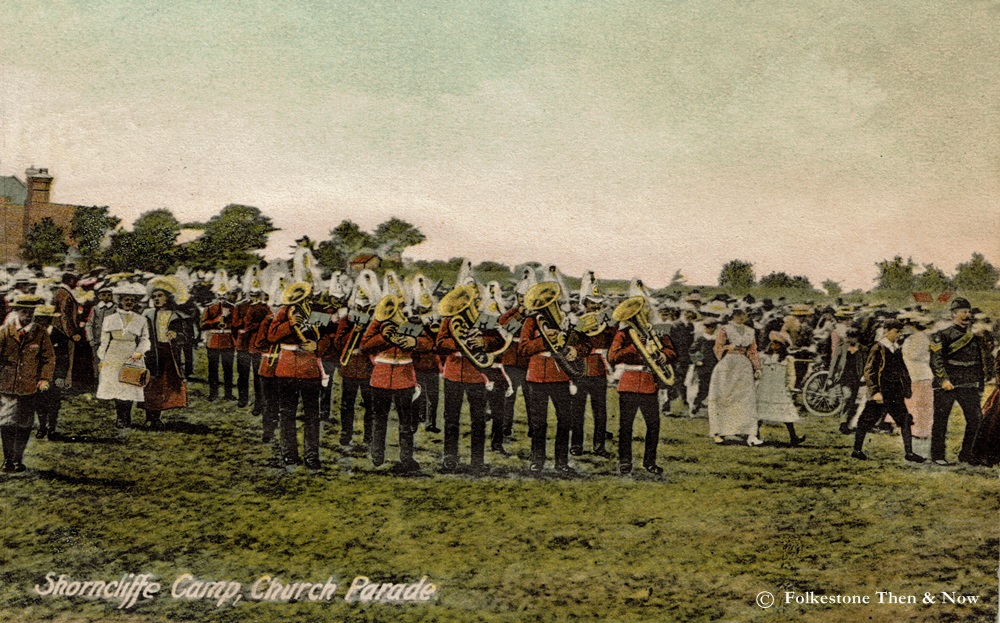
Same card, but has been hand coloured beautifully, it really makes the band stand out doesn't it? This one wasn't such interesting reading on the back, it was addressed to a Miss Leach in London, and all it says is "Another for your collection" Sorry mate, but it is now in Canada and has ended up in my collection. LOL.
Shorncliffe wasn't the only training camp in the vicinity at the beginning of WW1, there was another one at Sandling, just North of Maidstone in Kent. This is what one of the Canadians thought of his time there!

Within weeks of the outbreak of the Great War, men from all over Britain and the Empire had volunteered to join the war effort.
It has been well documented how millions walked down the Road of Remembrance on their way to the battlefields of France and Belgium. Many would not return.
Among those to answer the call to arms were the Canadians. Six weeks after the call to arms, they had raised an army of 33,000. The first contingent sailed to Britain and was welcomed at Salisbury Plain by an unusually wet Autumn, which gave the men a taste of the conditions they would soon experience in France.
On their arrival they boarded trains for Folkestone and the Shorncliffe Camp. Just before the war started, the grounds around the camp, which then had permanent barracks for 8,000 men, had been extended for training purposes. This land became known as Little Toronto.
Timber barracks were extended where possible, but for the rest, a vast city of tents became their home. Canadian families became familiar with the names of St. Martin's Plain, Otterpool and Sandling as letters and postcards streamed back across the Atlantic.
Some 40,000 Canadians had come to the area by 1915. A further 100,000 were to join them by the end of the war.
Unsurprisingly some of their mannerisms were picked up by the local people. "Sure" replaced "Yes", and "Good eats" was used to show appreciation of a fine meal.
Taken from the Folkestone Herald.

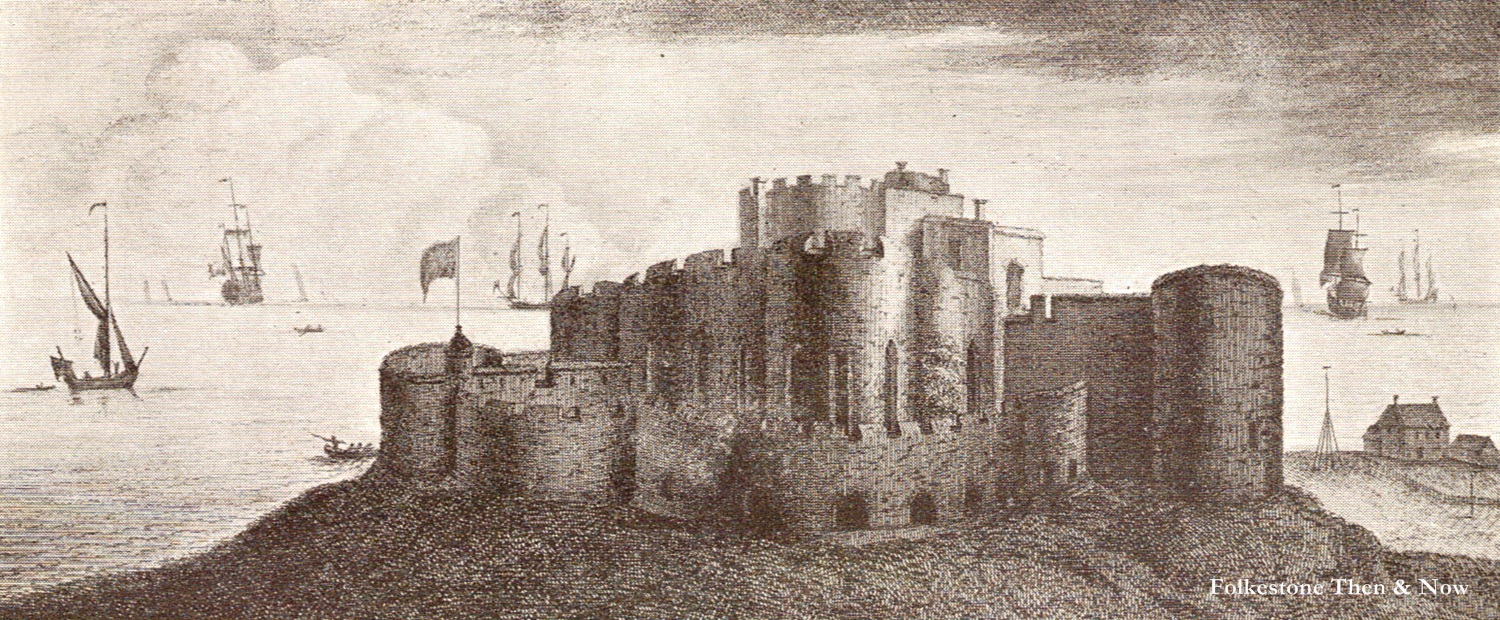
An engraving of Sandgate Castle. This is what I call a fortress! Build in 1735, unfortunately there is only a fraction left of it now, but still in use. This is what it said on the card:
'This castle was built by King Henry V111 (at the expense of £5000) together with Deal, Sandown and Walmer, in order to prevent a foreign invasion on this coast, which that King apprehended after he had shaken off the Pope's Yoke, and provoked the Emps by the divorce of Queen Catherine. Queen Elizabeth, A.D. 1588, on her progress into Kent to take care of the defence of the coast, lodged in this castle.'
(I noticed the spelling on the card of expense and defense was spelled with a C instead of an S. I know both is acceptable for defence, but couldn't leave it as expence, had to change that one! I assume Emps were Emperors, I don't think they were Electro Magnetic Pulses, which is what Wiki thinks it means these days, as the card is extremely old, where the stamp should go, it is written 1/2d - it has been quite a while since you could send a postcard for a halfpenny Besides, whoever wrote it, also had 2 Cath for Queen Catherine and 2 Eliz for Queen Elizabeth - 2 being the old way of writing a capital Q).
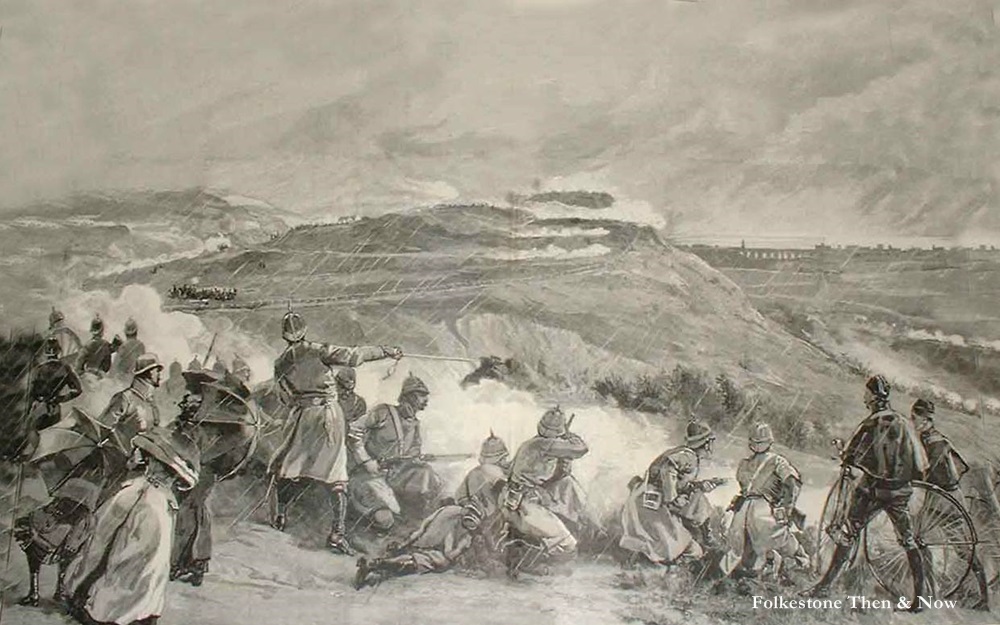
This engraving was in the Illustrated London News, 12 April 1890 entitled The Easter Monday Volunteer Manúuvers/Capture of Cæsar's Camp, near Folkestone
This was Christ Church in Sandgate Road before it was bombed. Built 1850-51, and a German bomb was dropped on it on May 17, 1942 leaving only the tower standing amid the rubble. Two ladies, who had gone early to prepare for the service were killed. I heard that the Germans hadn't realised Britain had put their clocks forward an hour, and expected the service to be underway with a congregation of servicemen, but I don't know if there is any truth to that. Anyway, the tower still stands to this day, and the grounds have been turned into a garden of remembrance for many of the conflicts that service people and animals of Folkestone have been involved in.
I don't know if the clock tower always had these words round it. It looks as if the stone may have been salvaged from the debris. It reads TRIFLE NOT, THY TIME IS SHORT, which is very apt.
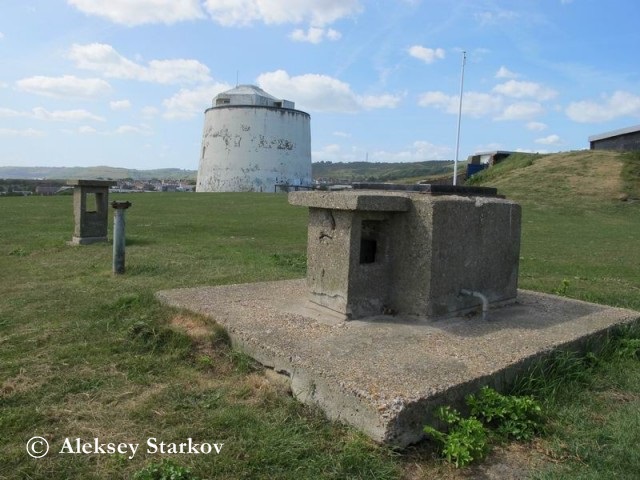

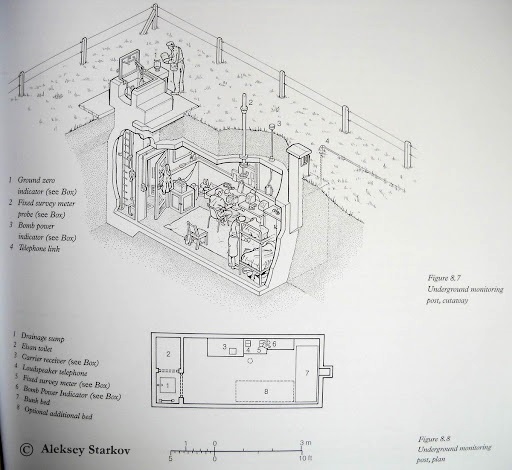
I was contacted by Aleksey Starkov who asked me if I knew about the Cold War bunker on the East Cliff. I was living in Folkestone when the threat of the Cold War was going on between the two super powers, The United States and the Soviet Union, and I think it was in the back of all our minds that the button could be pushed, and it would be game over for us all. But as far as I know, we were not told bunkers were being buried into the ground all over England, and apparently there are a few in Folkestone. This one on the East Cliff was designed as a monitoring post, but I believe some people were building them for their own protection. It was an unsettling time. If you would like to read more about the Cold War, I found this interesting website: https://historicengland.org.uk/research/current/discover-and-understand/military/cold-war/
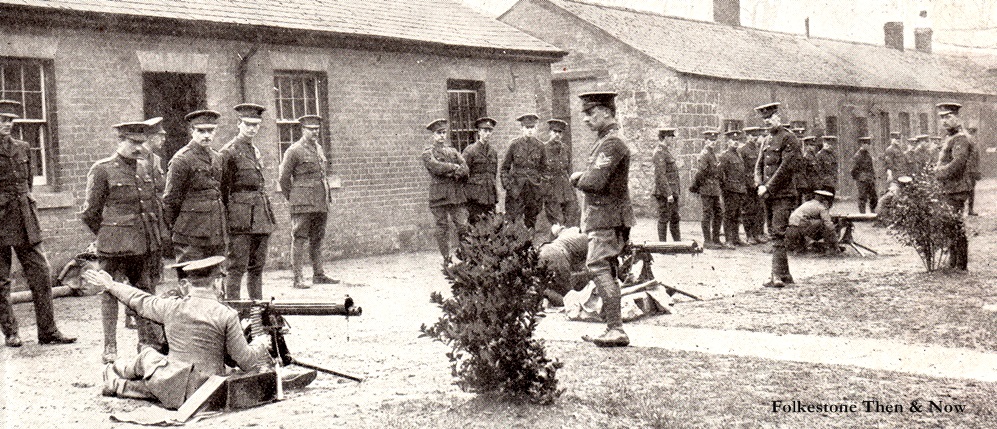
Back to 1914 again (I did warn you at the top of the page that I would flit about) This is machine gun training at the School of Musketry in Hythe. This school became the Small Arms School later on.
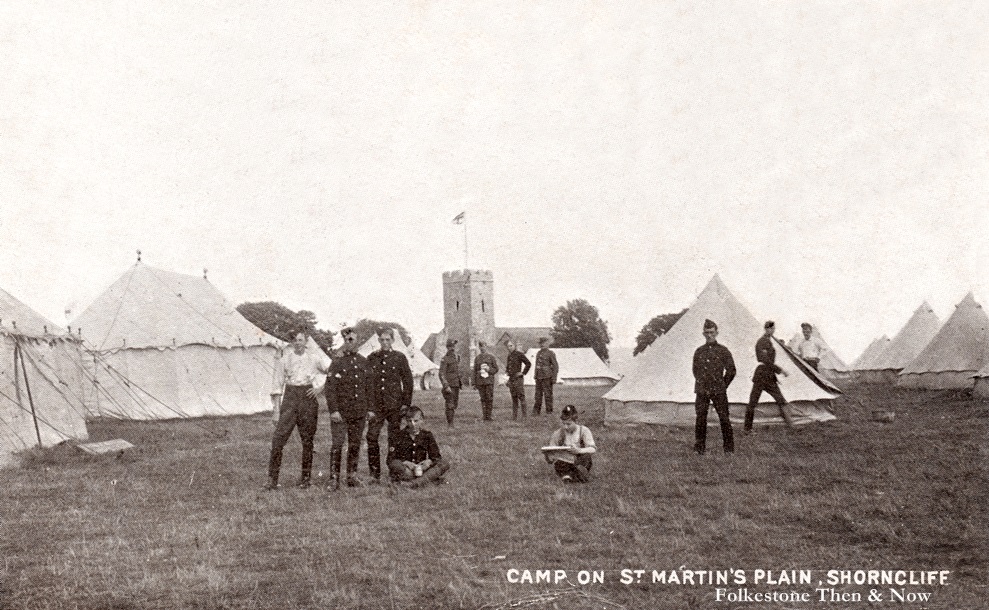
Back up to Shorncliffe Camp, this is St. Martin's Plain. You can see why it was called that, as that is St. Martin's Church in the background.
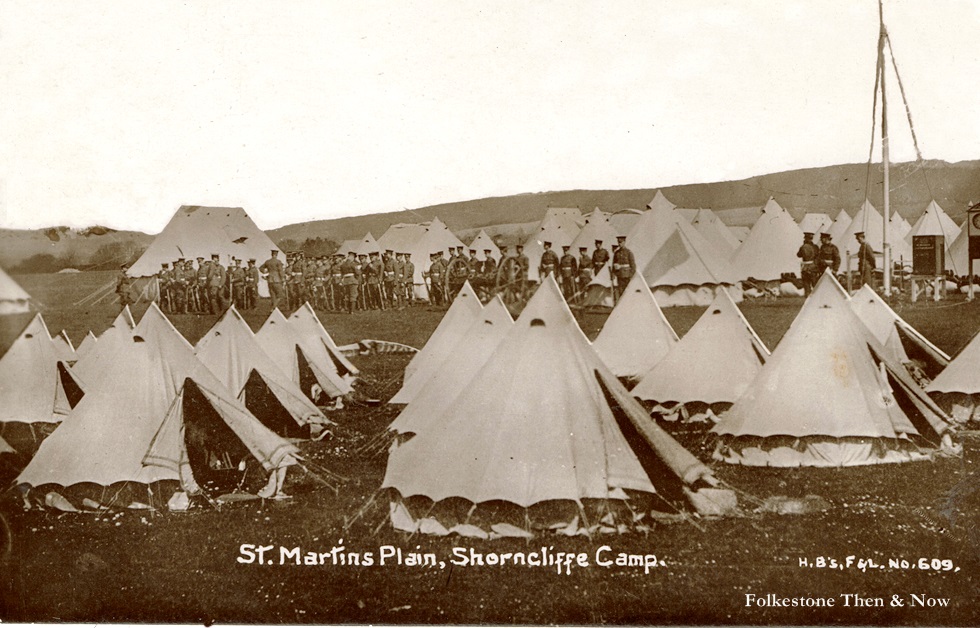
The Camp at St. Martin's Plain
These were the lucky ones who got a bed in the barracks
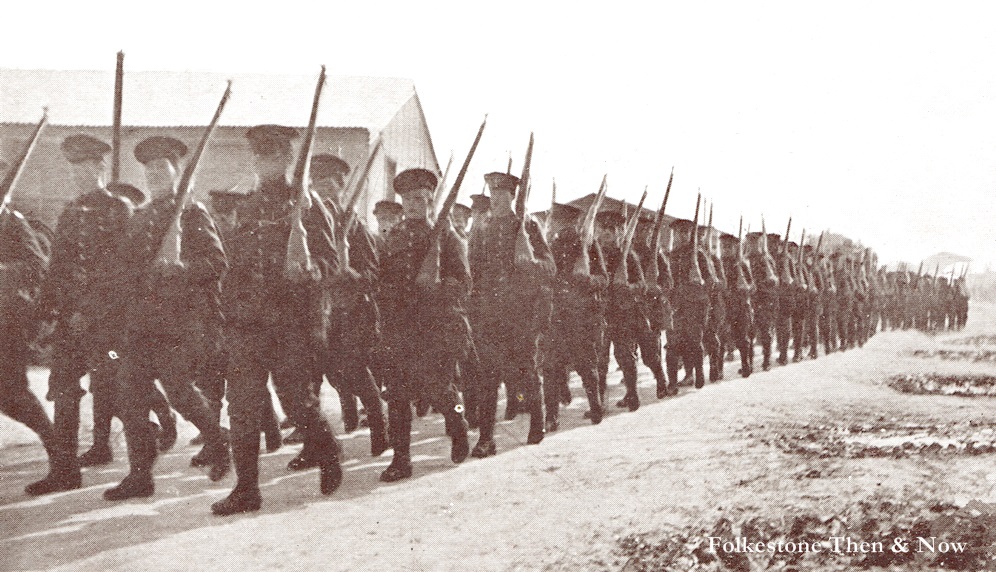
Returning to St. Martin's Plain after a Route March
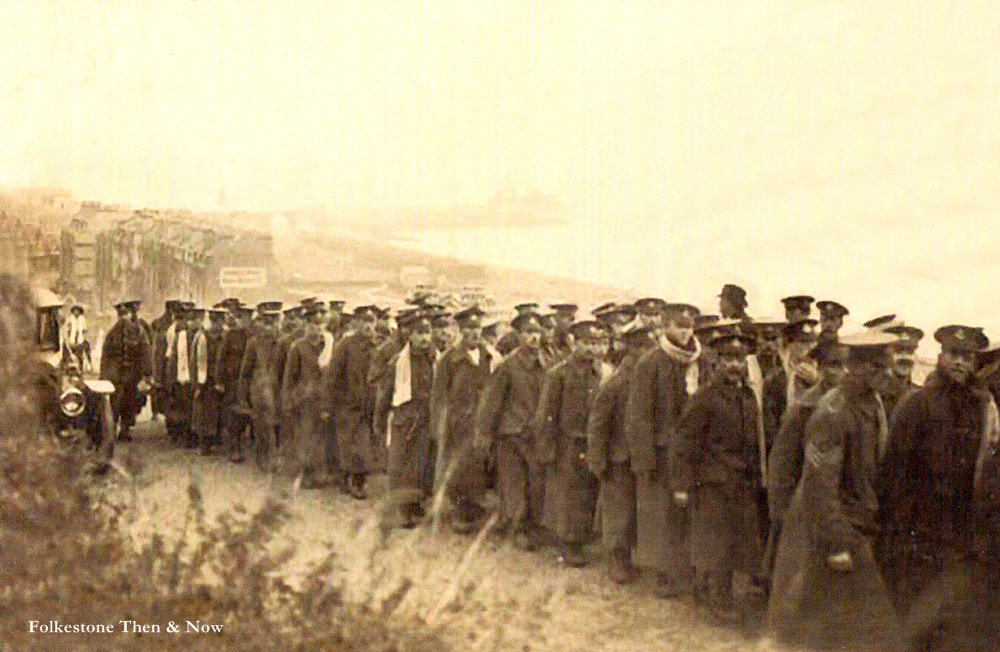
Troops walking up The Slope as it was called then, they were returning from bathing in 1915-16. Did they bathe in the sea? Or maybe it was in the Bathing Establishment, that was called The Marina in later years. I hope it was in warm water, but I somehow doubt it. They really had it hard here while training, but that was nothing compared to what they had to face when they got to the front line.
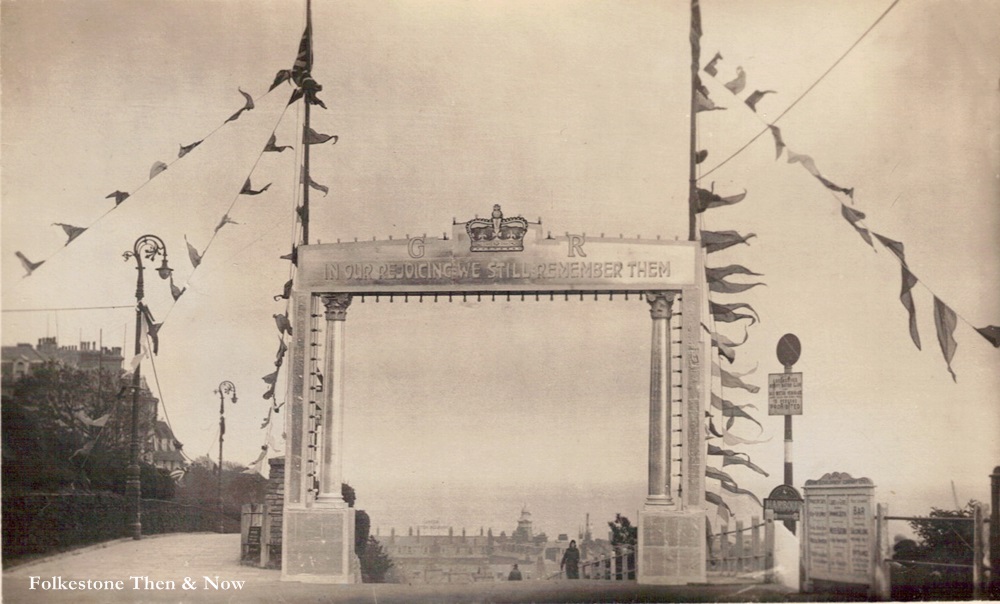
This was the Jubilee Arch that was erected at the top of the Road of Remembrance in 1935 to celebrate the Silver Jubilee of King George V. I imagine there was quite a lot of discussion about the location of the Arch, I am sure some thought it inappropriate to put a celebration at the top of a road that was renamed to honour our servicemen. So the wording 'IN OUR REJOICING WE STILL REMEMBER THEM' was added to the top of the arch.
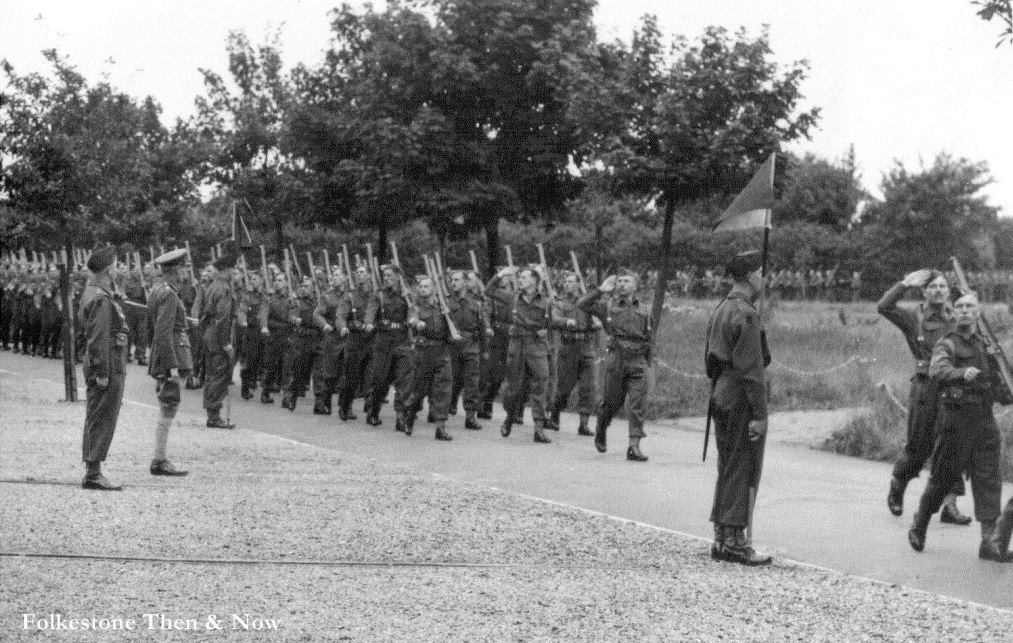
The year is now 1941, the place is Shorncliffe Camp, and the person inspecting the troops is none other than Field Marshall Montgomery. In April 1941, he became commander of XII Corps responsible for the defence of Kent. During this period he instituted a regime of continuous training and insisted on high levels of physical fitness for both officers and other ranks. He was ruthless in sacking officers he considered unfit for command in action
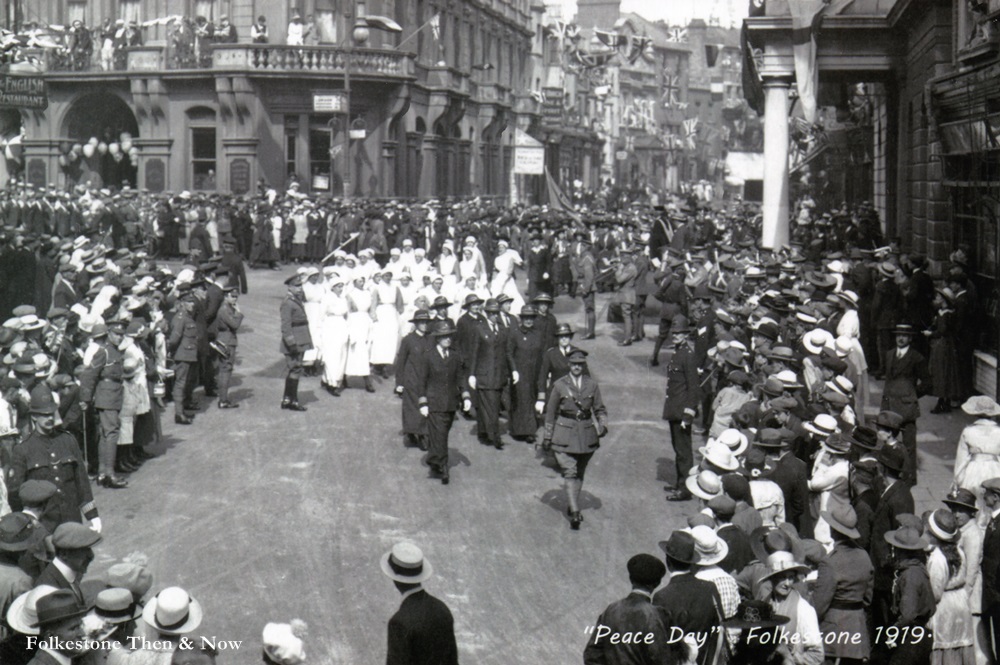
Let's finish for now with a happy photograph. It was 1919 and PEACE DAY. People turned out en mass to celebrate the end of the First World War. I will never understand why it is sometimes referred to as the Great War, because I am sure those who were in the thick of it thought it was anything but great. But it was great to celebrate the end of it, and a chance to honour those who went above and beyond to help, to heal and to fight for our freedom. Here they are marching past the Queen's Hotel and the Town Hall, being clapped and cheered all the way.
Page updated 25 April 2024

